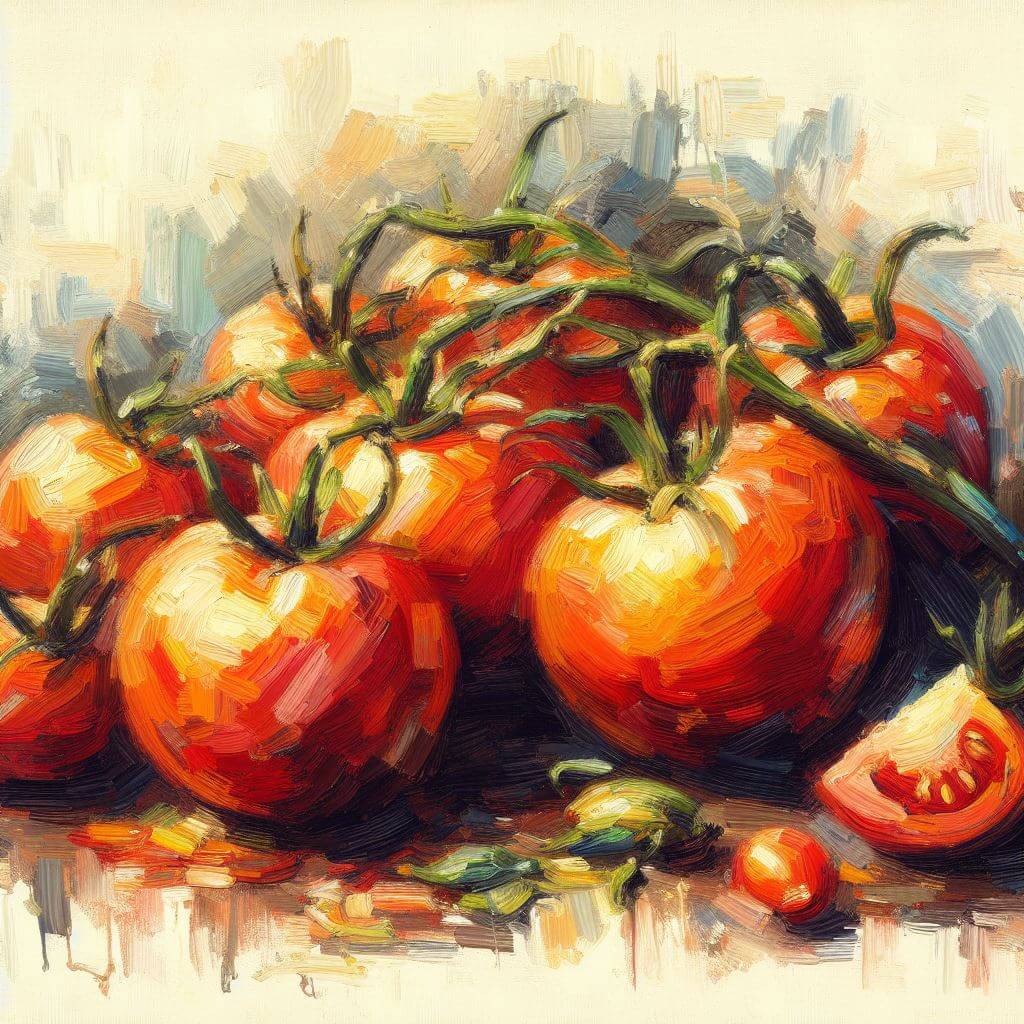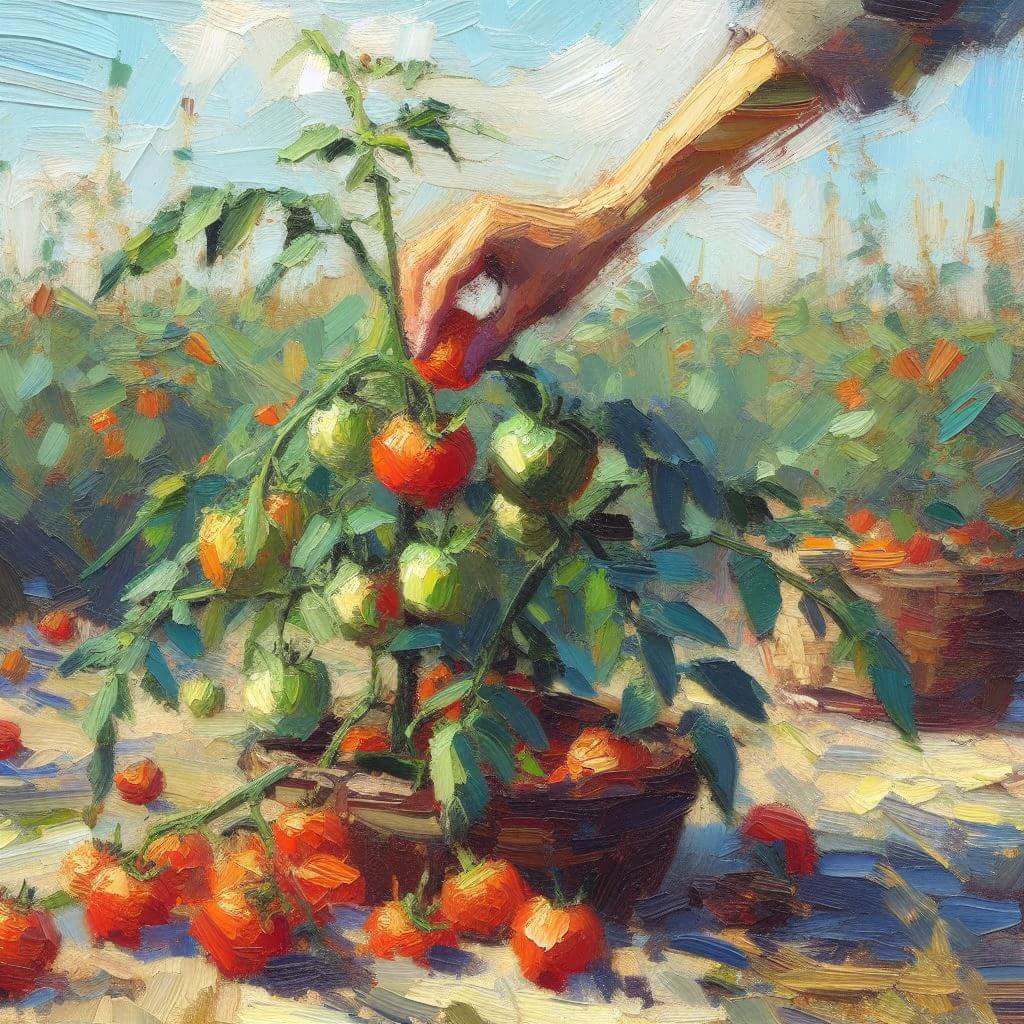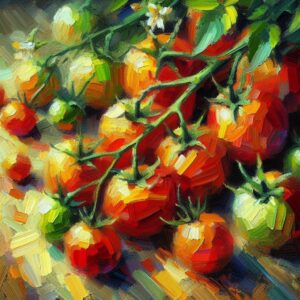
Growing your own food, especially something as versatile as tomatoes can be an incredibly rewarding endeavor. Not only does it offer a sense of fulfillment, but it also provides a sustainable and healthy food source right at your doorstep.
Nevada, with its unique climate and soil conditions, offers an excellent environment for tomato cultivation. Understanding the optimal time to plant tomatoes in Nevada is crucial for a successful harvest.
The Remarkable Tomato Plant
Tomatoes are a garden staple loved by many for their versatility in the kitchen and their vibrant, juicy flavor. Apart from their delicious taste, tomatoes offer numerous health benefits, such as high levels of antioxidants, Vitamin C, and potassium. Growing your own tomatoes ensures that you have access to this nutritious fruit (yes, botanically it’s a fruit) throughout the season.
The Alluring Environment of Nevada
Nevada’s climate is a blend of warm, dry summers and mild winters. The soil is typically sandy or loamy, well-draining, and slightly alkaline. Tomatoes generally prefer slightly acidic to neutral soil (pH 6.0-7.0), but they can tolerate the slight alkalinity found in Nevada’s soil, especially if it is well-managed with organic matter to balance the pH levels.
The abundant sunshine that Nevada enjoys also plays a pivotal role, providing tomatoes with the vital energy they need for optimal growth and fruit development.

Best Time to Plant Tomatoes in Nevada
Tomatoes thrive in warm temperatures and are sensitive to frost. Therefore, timing your plantation correctly is crucial. In Nevada, the ideal time to plant tomatoes is after the last frost date in spring, typically between March and April. Planting during this period allows the plant to grow and mature before the intense summer heat.
However, the growth of tomatoes can vary depending on when they are planted. An early plantation might lead to a longer growing season, while a late plantation may yield a shorter but potentially more robust harvest.
When to Plant Tomatoes in Nevada: Region-Specific Recommendations
Northern Nevada
Northern Nevada, including areas like Reno and Elko, experiences cooler temperatures and a shorter growing season due to its higher elevation. The best time to plant tomatoes here is late April to early May, once the soil has warmed up and the risk of frost has passed.
Southern Nevada
This region encompasses areas such as Las Vegas and Henderson. It’s characterized by a hot desert climate with longer, warmer seasons. Here, tomatoes can be planted a bit earlier, typically from mid to late March, after the danger of frost is over.
Eastern Nevada
Eastern Nevada, including areas like West Wendover and Wells, experiences a semi-arid climate with hot summers and cold winters. The safe window to plant tomatoes usually begins around late April to early May, once the frost risk has diminished.
Western Nevada
This region includes areas like Carson City and Virginia City. It has a high desert climate with cold winters and hot summers. The best time to plant tomatoes is late April to early May, once the soil warms and the risk of frost has passed.
Central Nevada
Central Nevada, encompassing areas like Eureka and Austin, features a semi-arid climate with a longer warm season. Here, the ideal time to plant tomatoes is mid to late April, when the soil has sufficiently warmed and the likelihood of frost is minimal.

Planting Tomatoes: A Step-by-Step Guide
Select the Right Tomato Variety: Choose a type that suits your taste and the local climate. In Nevada, heat-tolerant varieties often fare better.
Prepare the Soil: Amend your garden soil with organic matter like compost or well-rotted manure to improve its fertility.
Plant the Seedlings: Dig a hole large enough to accommodate the root ball of your tomato plant. Place the plant in the hole and cover it with soil, ensuring the stem is buried up to its first set of true leaves. This encourages a strong root system.
Water Regularly: Water your tomatoes deeply and regularly, especially during dry periods. However, avoid overwatering as it can lead to root rot.
Stake or Cage Your Plants: This helps support the plant as it grows and keeps the fruit off the ground.
Tomato Varieties Suitable for Nevada
Given Nevada’s unique climate, it’s important to choose tomato varieties that can thrive in its conditions. Here are some that are particularly well-suited to Nevada’s warm and dry climate:
Early Girl: As the name suggests, this variety is known for its early harvest. Early Girl tomatoes can tolerate a wide range of conditions and mature in about 50-60 days, providing an early crop before the intense summer heat.
Heatmaster: This variety is specifically bred to perform well in hot climates. Heatmaster tomatoes are robust, with a firm texture and a rich, sweet flavor.
Solar Fire: Solar Fire tomatoes are heat-tolerant and resistant to cracking, making them ideal for Nevada’s sunny climate. They yield large, juicy fruits that are excellent for fresh eating or cooking.
Cherry Tomatoes: Small and quick to ripen, cherry tomatoes are a great choice for Nevada’s climate. Varieties like ‘Sweet 100’ and ‘Sun Gold’ are known for their heat tolerance and prolific yields.
Roma Tomatoes: Roma or “paste” tomatoes are a good choice for hot, dry climates. They have fewer seeds, making them perfect for sauces and pastes.
Brandywine Tomatoes: Although they require a bit more care, Brandywine tomatoes are worth the effort. They are an heirloom variety known for their exceptional flavor.
Remember that even heat-tolerant varieties require consistent watering and care, especially during the hottest months. Whichever variety you choose, ensure it gets plenty of water, sun, and nutrients, and you’ll have a thriving tomato garden in no time.

Nurturing and Maintaining Your Tomato Plants
After planting, tomatoes require consistent care and attention to thrive and produce a healthy harvest. Here are some tips to help you sustain your tomato plants:
Feed Your Plants: Tomatoes are heavy feeders, so consider adding a slow-release fertilizer to the planting hole and then a liquid fertilizer every two weeks once the plant starts to set fruit.
Mulch: Mulching around the base of the plants helps conserve water, suppress weeds, and maintain a stable soil temperature, which is particularly beneficial in Nevada’s hot climate.
Prune: Pruning your tomato plants can improve air circulation, prevent diseases, and encourage bigger and better fruit. Be careful not to over-prune, though, as this can expose the fruit to sunscald.
Monitor for Pests and Diseases: Regularly check your plants for signs of pests or diseases. If detected early, most issues can be managed effectively.
Rotating Your Crops: To maintain soil health and prevent disease buildup, consider practicing crop rotation. This involves changing the type of plant grown in each area of your garden each year. For instance, if you planted tomatoes in a particular spot this year, plant a different crop there next year.
Harvesting Your Tomatoes
Your tomatoes are ready to harvest when they have a uniform color and feel slightly soft when squeezed gently. It is better to pick your tomatoes when they are nearly ripe and allow them to fully ripen indoors. This prevents splitting, which can occur if the fruit is left on the plant too long.
Storing Your Tomatoes
Store your harvested tomatoes at room temperature away from direct sunlight. Avoid refrigerating them as this can affect their flavor and texture. If you have an abundance of tomatoes, consider preserving them by canning, drying, or freezing.
The Fruits of Your Labor
Growing tomatoes can be a rewarding experience if you understand the unique environmental conditions and the specific needs of the tomato plant. Planting at the right time and providing consistent care will ensure a successful harvest.
Remember, the key to successful gardening is patience and a willingness to learn from your experiences. With time and practice, you will be able to enjoy a bountiful harvest of home-grown tomatoes. Happy gardening!



